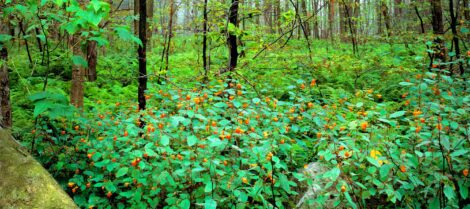This past March, I moved my family from Nevada to Kansas. While this put us within walking distance of the Mother Earth News headquarters, this wasn’t our primary motivation. We moved because of rainfall and the ecosystems that thrive in it.
That magical elixir that falls from the sky is key to vegetative growth that becomes compost and builds soil. It provides for so many plants and animals — whether wild or farmed — that sustain us. I’d grown proficient in desert gardening in my 25 years living in Nevada, but everything has limits when water is scarce.
When I asked my daughter what she was most excited about, she said, “Foraging.” She specifically meant foraging for mushrooms, since those don’t grow in Nevada without a lot of effort, but she also wants to forage for berries and greens. This land of lakes and rains offers many more opportunities to gather food from Mother Nature.
While foraging in Nevada wasn’t nonexistent, it didn’t come easily. Edible lambsquarters grew in my garden, benefiting from the weeper lines that sustained my vegetables. Pine nuts fell from pinyon pines along mountain slopes. If we drove to areas fed by springs or snowmelt, we could sometimes find chokecherries or elderberries. In Idaho, where I grew up, we found huckleberries, grouse whortleberries, serviceberries, and sego lilies. I made pine needle and nettle teas when I went camping.
But Kansas is a different world, and though I recognize some of the flora and fauna, we have a lot to learn.
I drove my daughter to a local bookstore and bought four guides to foraging in the Midwest before we ever set out on our first morel hunt. We knew what morels look like, but we didn’t know that they thrive beneath specific understories and that different types grow on different slopes during different seasons. And we have a lot of studying to do before we forage our first chanterelles and oyster mushrooms.
The content in Mother Earth News is timely for my family’s foraging education. Bruce Ingram discussed foraging for mushrooms that grow on trees. And in this issue, Jenny Underwood writes about homemade jelly recipes using wild blossoms and berries. Though I’ve certainly heard of poison ivy, I’ve never encountered it, but Kansas offers plenty to keep me on my toes. Thank goodness Melanie Teegarden shares how to identify and forage jewelweed. She describes crushing it for immediate first aid, creating a poultice, and even infusing it into homemade poison ivy soap to keep on hand in case jewelweed can’t be found after a poison ivy incident. If you enjoy Melanie’s article about jewelweed, watch for her upcoming guide to beginner soap-making, which we’ll publish later this year.
Do you forage in your neck of the woods? And what do you forage for? We’d love to hear about it. And if you have tips and tricks for foraging in the Midwest (and staying away from poison ivy, oak, or sumac), my family would appreciate receiving knowledge and experience from those who have done it longer than we have.
May your foraging be successful — and may poison ivy stay far away!
Marissa Ames
Originally published as “Foraging as a Family” in the June/July 2023 issue of MOTHER EARTH NEWS and regularly vetted for accuracy.




